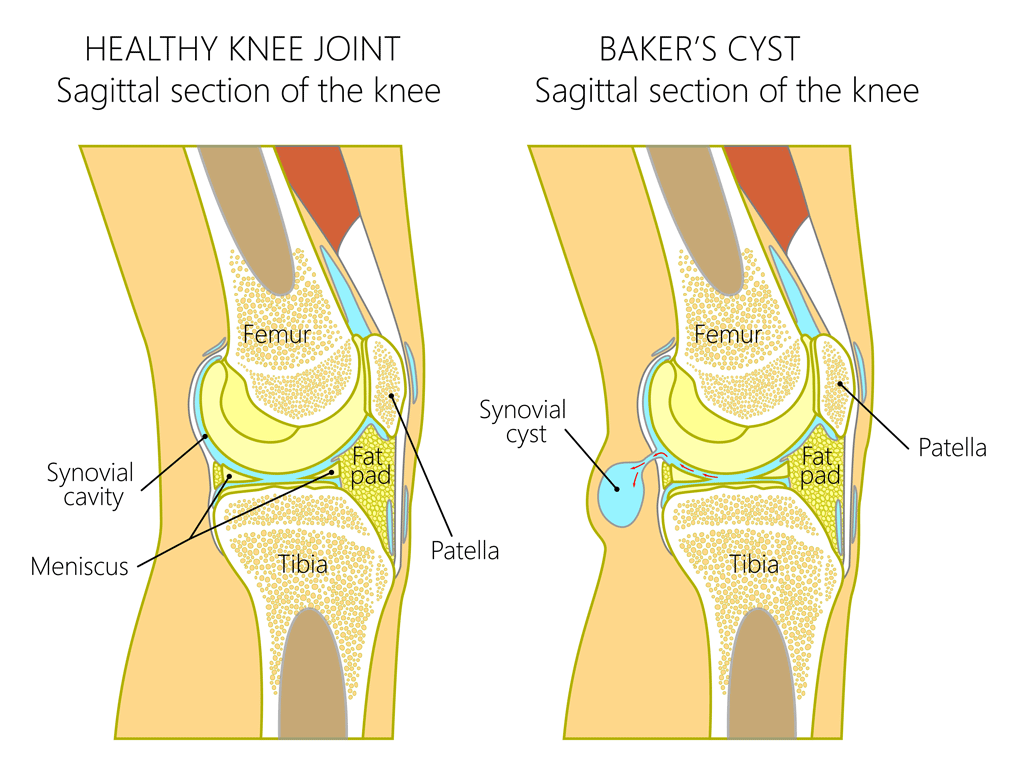Baker ́s-cyst (also known as a popliteal cyst)
It is a protrusion at the dorsal (back) side of the knee joint between the gastrocnemius muscle (medial head) and the semimembranosus muscle. It usually develops in connection with damage within the knee joint, for example in the case of a lesion of the medial meniscus, arthritic cartilage changes or rheumatoid arthritis. Chronic inflammatory processes lead to increased production of synovial fluid, which causes excess pressure in the knee joint. The joint capsule then gives way at the site of least resistance (locus minoris resistentiae), as mentioned above, and forms a cyst. (Source: Wikipedia)
At the 53rd International BICOM® Congress, Marcel Riffel, naturopath and physiotherapist from Ostfildern near Stuttgart, presented successful treatment options for knee joint diseases. For the treatment of Baker’s cysts, he recommends the following individual parameters, which can be set in the BICOM® optima via menu item 5:
Baker ́s cyst / swelling of the knee joint (dorsal) (Di / Normal range / 1260 Hz / Wobble YES / constant amplification Di = 12 / Interval YES / Time: 8 min.)
Applicator placement
- Input cup: sputum, urine
- Output cup: BICOM® oil for rubbing in
- Chip device: BICOM® Chip
- Input: flexible applicator on the liver or dorsally on the affected knee
- Output: Modulation mat on the back
This setting can be found in the new BICOM® optima device under program number 452.2. The parameters have also proven to improve the excretion performance of the liver and are passed on by Mr. Riffel as a further recommendation.
With the BICOM® 2000 device, these parameters can also be entered and saved. This can be done under menu item “2” and can be saved via “4” (see operating instructions).
We wish you much success in implementing our tips!


